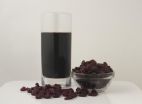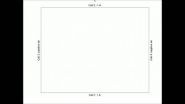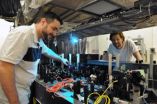(Press-News.org) BELLINGHAM, Washington, USA — A new open-access article in the Journal of Applied Remote Sensing is garnering attention for research that could aid in the campaign to prevent drunk driving: a device that can detect alcohol in cars. The Journal of Applied Remote Sensing is published by SPIE, the international society for optics and photonics.
The article "Stand-off detection of alcohol in car cabins," by Jarosław Młyńczak, Jan Kubicki, and Krzysztof Kopczyński of the Military University of Technology in Warsaw, details experiments using an external laser device to detect the presence of alcohol vapors inside of a moving car. The device was constructed at the university's Institute of Optoelectronics based on previous research from a 2013 paper by the same authors.
Stand-off detection is a chemical and biological compound identification method using a laser that takes place at a distance from people to reduce the potential for damage. The authors note that the use of stand-off detection for chemical identification is already described in many papers, but that developments in the types of lasers that can be used in this application have been made in recent years, including "eye-safe" microchip lasers.
"This work illustrates how remote sensing technologies affect our everyday life," said Marco Gianinetto of the Politecnico di Milano, an associate editor with the journal. "We all are already familiar with laser instruments used by the police for speed-limit enforcement. Now these researchers have demonstrated how a laser device could be effectively used for detecting drunken drivers and thereby helping to reduce the number of accidents caused by drivers under the influence of alcohol. In the future, a similar technology may be developed to detect different chemical compounds, enabling the detection of drivers under the influence of other intoxicants."
The use of the device is simple: The laser system is set up on the side of the road to monitor each car that passes by. If alcohol vapors are detected in the car, a message with a photo of the car including its number plate is sent to a police officer waiting down the road. Then, the police officer stops the car and checks for signs of alcohol using conventional tests.
The authors note that the device would likely also identify cars where the driver is sober but the passengers are not, or if there is spilled alcohol in the car, but that the device "will surely decrease the number of cars that have to be checked by police and, at the same time, will increase efficacy of stopping drunken drivers."
The device was tested with a car deployed on the road while the laser stayed in the laboratory next to an open window, making it possible to extensively monitor the device.
The researchers simulated alcohol vapor coming from a human lung by evaporating a water solution of alcohol of an appropriate concentration and at an appropriate temperature. The results showed that the presence of alcohol vapors was detected at concentrations of 0.1% and greater.
"From the practical point of view, there seem to be some countermeasures, such as driving with windows open, solar screens on the side windows, etc., that can be applied by drivers to deceive the system," the authors wrote in their conclusion. "However, such situations are very easily detected by the system, which sends this information to the policeman indicating that the car should be checked."
Other issues, including driving with air-conditioning or fans, will be investigated in the next stages of the ongoing project, as well as addressing commercialization concerns including creating a device that is more compact, robust and user-friendly.
INFORMATION:
The Journal of Applied Remote Sensing is published under Editor-in-Chief Ni-Bin Chang, University of Central Florida, in the SPIE Digital Library, which contains nearly 400,000 articles from SPIE journals, proceedings, and books, with approximately 18,000 new research papers added each year. Abstracts are freely searchable, and an increasing number of full journal articles are published with open access.
SPIE is the international society for optics and photonics, a not-for-profit organization founded in 1955 to advance light-based technologies. The Society serves nearly 256,000 constituents from approximately 155 countries, offering conferences, continuing education, books, journals, and a digital library in support of interdisciplinary information exchange, professional networking, and patent precedent. SPIE provided more than $3.2 million in support of education and outreach programs in 2013.
Laser device can detect alcohol in cars, say authors in Journal of Applied Remote Sensing
External device detects presence of alcohol vapors inside of a moving car
2014-06-02
ELSE PRESS RELEASES FROM THIS DATE:
Solving the puzzle of ice age climates
2014-06-02
The paleoclimate record for the last ice age — a time 21,000 years ago called the "Last Glacial Maximum" (LGM) — tells of a cold Earth whose northern continents were covered by vast ice sheets. Chemical traces from plankton fossils in deep-sea sediments reveal rearranged ocean water masses, as well as extended sea ice coverage off Antarctica. Air bubbles in ice cores show that carbon dioxide in the atmosphere was far below levels seen before the Industrial Revolution.
While ice ages are set into motion by Earth's slow wobbles in its transit around the sun, researchers ...
Seniors who exercise regularly experience less physical decline as they age
2014-06-02
COLUMBIA, Mo. –The majority of adults aged 65 and older remains inactive and fails to meet recommended physical activity guidelines, previous research has shown. However, these studies have not represented elders living in retirement communities who may have more access to recreational activities and exercise equipment. Now, researchers at the University of Missouri found that older adults in retirement communities who reported more exercise experienced less physical decline than their peers who reported less exercise, although many adults — even those who exercised — did ...
CDC report: Patients harmed after health-care providers steal patients' drugs
2014-06-02
Rochester, MN, June 2, 2014 – When prescription medicines are stolen or used illegally, it is called drug diversion. One aspect of drug diversion that is not well recognized involves health care providers who steal controlled substances for their personal use. A report authored by experts from the Centers for Disease Control and Prevention (CDC) --published today in Mayo Clinic Proceedings -- outlines outbreaks of infections that have occurred as a result of health care providers stealing or tampering with their patients' medications. These outbreaks revealed gaps in prevention, ...
Rensselaer researchers predict the electrical response of metals to extreme pressures
2014-06-02
Troy, N.Y. – Research published today in the Proceedings of the National Academy of Sciences makes it possible to predict how subjecting metals to severe pressure can lower their electrical resistance, a finding that could have applications in computer chips and other materials that could benefit from specific electrical resistance.
The semiconductor industry has long manipulated materials like silicon through the use of pressure, a strategy known as "strain engineering," to improve the performance of transistors. But as the speed of transistors has increased, the limited ...
Study shows impact of tart cherries on inflammation and oxidative stress after cycling
2014-06-02
Cyclists who drank Montmorency tart cherry juice concentrate before a three-day simulated race experienced less inflammation and oxidative stress compared to those who drank another beverage, according to a recent U.K. study published in the journal Nutrients.
A research team led by Dr. Glyn Howatson with PhD student Phillip Bell at Northumbria University gave 16 well-trained, male cyclists about 1 ounce (30 ml) of Montmorency tart cherry juice concentrate mixed with water (equivalent to 90 whole Montmorency tart cherries per serving), or a calorie-matched placebo, twice ...
Transition to ICD-10 may mean financial, data loss for pediatricians
2014-06-02
Pediatricians may lose money or data during the mandated conversion from the current International Classification of Diseases (ICD) to its new version, according to University of Illinois at Chicago researchers.
The study is published in Pediatrics.
The ICD codes are used in managing all aspects of health care, from insurance reimbursement to staffing decisions to supply procurement to research. Pediatricians use a variety of ICD-9 codes from many different categories, including well child care, infectious diseases, injury and genetic disorders.
The ICD-10-CM, scheduled ...
Here come the 'brobots'
2014-06-02
WASHINGTON D.C. June 2, 2014 -- A team of researchers at the University of Twente (Netherlands) and German University in Cairo (Egypt) has developed sperm-inspired microrobots, which can be controlled by oscillating weak magnetic fields.
Described in a cover article in the journal Applied Physics Letters, which is from AIP Publishing, the 322 micron-long robots consist solely of a head coated in a thick cobalt-nickel layer and an uncoated tail. When the robot is subjected to an oscillating field of less than five millitesla – about the strength of a decorative refrigerator ...
MRI-guided laser procedure provides alternative to epilepsy surgery
2014-06-02
May 30, 2014 – For patients with mesial temporal lobe epilepsy (MTLE) that can't be controlled by medications, a minimally invasive laser procedure performed under MRI guidance provides a safe and effective alternative to surgery, suggests a study in the June issue of Neurosurgery , official journal of the Congress of Neurological Surgeons . The journal is published by Lippincott Williams & Wilkins , a part of Wolters Kluwer Health.
"Real-time magnetic resonance-guided stereotactic laser amygdalohippocampotomy (SLAH) is a technically novel, safe and effective alternative ...
University of Toronto physicists take quantum leap toward ultra-precise measurement
2014-06-02
TORONTO, ON – For the first time, physicists at the University of Toronto (U of T) have overcome a major challenge in the science of measurement using quantum mechanics. Their work paves the way for great advances in using quantum states to enable the next generation of ultra-precise measurement technologies.
"We've been able to conduct measurements using photons – individual particles of light – at a resolution unattainable according to classical physics," says Lee Rozema, a Ph.D. candidate in Professor Aephraim Steinberg's quantum optics research group in U of T's Department ...
One in 4 children with leukemia not taking maintenance medication, study shows
2014-06-02
(WASHINGTON, June 2, 2014) – An estimated 25 percent of children in remission from acute lymphocytic leukemia (ALL) are missing too many doses of an essential maintenance medication that minimizes their risk of relapse, according to a study published online today in Blood, the Journal of the American Society of Hematology. The study also reports that maintenance medication adherence was lower in African American and Asian children in remission from ALL than in non-Hispanic white children, with 46 percent of African Americans and 28 percent of Asians not taking enough to ...
LAST 30 PRESS RELEASES:
Injectable breast ‘implant’ offers alternative to traditional surgeries
Neuroscientists devise formulas to measure multilingualism
New prostate cancer trial seeks to reduce toxicity without sacrificing efficacy
Geometry shapes life
A CRISPR screen reveals many previously unrecognized genes required for brain development and a new neurodevelopmental disorder
Hot flush treatment has anti-breast cancer activity, study finds
Securing AI systems against growing cybersecurity threats
Longest observation of an active solar region
Why nail-biting, procrastination and other self-sabotaging behaviors are rooted in survival instincts
Regional variations in mechanical properties of porcine leptomeninges
Artificial empathy in therapy and healthcare: advancements in interpersonal interaction technologies
Why some brains switch gears more efficiently than others
UVA’s Jundong Li wins ICDM’S 2025 Tao Li Award for data mining, machine learning
UVA’s low-power, high-performance computer power player Mircea Stan earns National Academy of Inventors fellowship
Not playing by the rules: USU researcher explores filamentous algae dynamics in rivers
Do our body clocks influence our risk of dementia?
Anthropologists offer new evidence of bipedalism in long-debated fossil discovery
Safer receipt paper from wood
Dosage-sensitive genes suggest no whole-genome duplications in ancestral angiosperm
First ancient human herpesvirus genomes document their deep history with humans
Why Some Bacteria Survive Antibiotics and How to Stop Them - New study reveals that bacteria can survive antibiotic treatment through two fundamentally different “shutdown modes”
UCLA study links scar healing to dangerous placenta condition
CHANGE-seq-BE finds off-target changes in the genome from base editors
The Journal of Nuclear Medicine Ahead-of-Print Tip Sheet: January 2, 2026
Delayed or absent first dose of measles, mumps, and rubella vaccination
Trends in US preterm birth rates by household income and race and ethnicity
Study identifies potential biomarker linked to progression and brain inflammation in multiple sclerosis
Many mothers in Norway do not show up for postnatal check-ups
Researchers want to find out why quick clay is so unstable
Superradiant spins show teamwork at the quantum scale
[Press-News.org] Laser device can detect alcohol in cars, say authors in Journal of Applied Remote SensingExternal device detects presence of alcohol vapors inside of a moving car


